|
Chorale Melodies used in Bach's Vocal Works
Der Tag, der ist so freudenreich |
|
Melody & Text | Use of the CM by Bach | Use of the CM by other composers |
| |
|
Melody & Text: |
|
The Christmas Carol, “Dies est laetitiae, In ortu regali,” dates probably from the 14th century. “Der Tag, der ist so freudenreich,” an early 15th century translation of it, is found in many versions with a varying number of stanzas. The form translated here is in four stanzas, in Joseph Klug’s Wittenberg Hymn-book, 1535 [1529], along with the melody.
The tune, whose opening phrase is reminiscent of the Carol “Puer natus in Bethlehem,” is that of the Latin “Dies est laetitiae.” Bach uses it in the two Organ movements infra and Choralgesange, No. 62. His text closely follows Witt’s (No. 20).
Source: Charles Sanford Terry: Johann Sebastian Bach, Bach’s Chorals, vol. 3 The Hymns and Hymn Melodies of the Organ Works (1921), pp 131-133 |
|
Melody: Zahn 7869
Composer: Anon (Wittenberg, 1529), after a 15th century melody Dies est laetitiae |
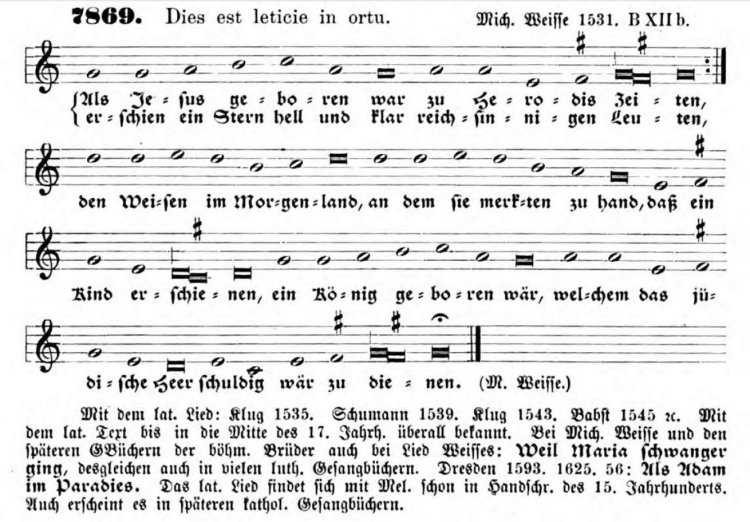 |
|
Text: Der Tag der ist so freudenreich (NLGB 18)
Author: Martin Luther (1529), a German translation of 14th century Latin Hymn Dies est laetitiae |
|
Hymnal versions Bach may have known: |
|
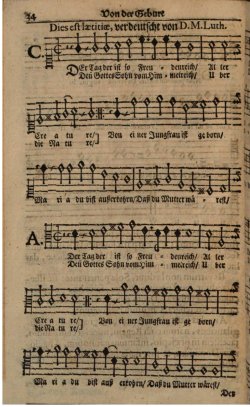
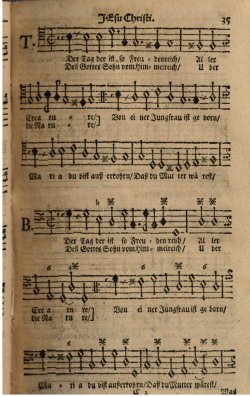

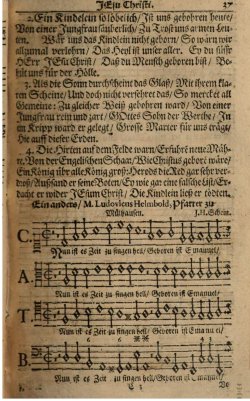
|
|
Melody & text of Das walt’ mein Gott, Vater, Sohn und heiliger Geist (NLGB
18) from the Neu Leipziger Gesangbuch, pp 34-37 |
| |
| |
|
Use of the Chorale Melody by Bach: |
|
Text: Der Tag der ist so freudenreich |
|
Der du bist drei in Einigkeit, BWV 294
Ref: RE 158; Br158; KE 62; Birnstiel 162; AmB 46II p.90 & p.129; Penzel 123; BGA 41; BC F43.1; CST 65 |
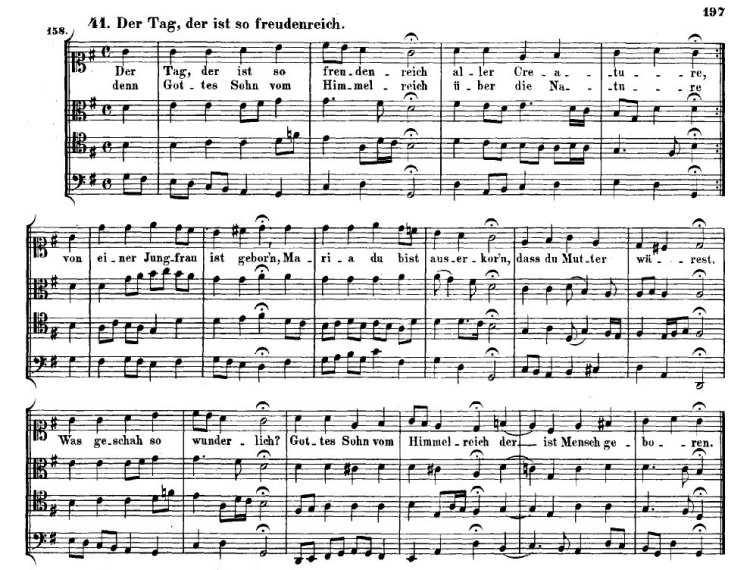 |
|
Untexted: |
|
Chorale Prelude Der Tag, der ist so freudenreich (I), BWV 605 |
|
N. xv. 18. A Christmas movement in the Orgelbüchlein, instinct with the spirit of the opening lines of the hymn:
O hail this brightest day of days,
All good Christian people!
For Christ hath come upon our ways,
Ring it from the steeple!
The  rhythm which pervades the movement uninterruptedly is one of two that Bach employs to express joy and exhilaration. It is found in “Erschienen ist der herrliche Tag” (N. xv. 91), “In dich hab’ich gehoffet, Herr” (N. xv. 113), “Wir danken dir” (N. xv. 73), and “Von Gott will ich nicht lassen” (N. xvii. 43). “A joyful soaring rhythm,” Spitta calls it. rhythm which pervades the movement uninterruptedly is one of two that Bach employs to express joy and exhilaration. It is found in “Erschienen ist der herrliche Tag” (N. xv. 91), “In dich hab’ich gehoffet, Herr” (N. xv. 113), “Wir danken dir” (N. xv. 73), and “Von Gott will ich nicht lassen” (N. xvii. 43). “A joyful soaring rhythm,” Spitta calls it. |
 |
|
Chorale Prelude Der Tag, der ist so freudenreich (II), BWV 719 |
|
A movement upon the first half of the melody, i.e. stanza i, lines 1-4. Its source is a collection of Organ Chorals made by Johann Christoph Bach, of Eisenach, Sebastian’s uncle. It is the only one by Bach in the collection. |
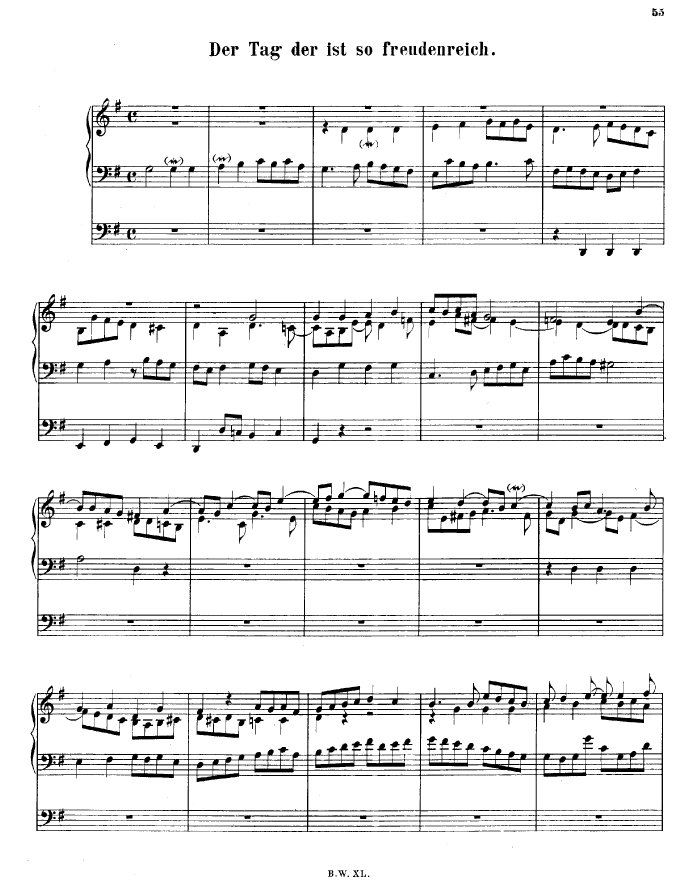 |
| |
| |
|
Use of the Chorale Melody by other composers: |
| |
| |
|
Sources: Bach Digital; BGA; Zahn
Photos from Gottfried Vopelius: Neu Leipziger Gesangbuch (Vopelius 1682), were taken from a digital copy of the book downloaded from Bayerische Staatsbibliothek München. This copy is Out of copyright - non commercial re-use (Europeana Rights).
Prepared by Aryeh Oron (October 2018) |